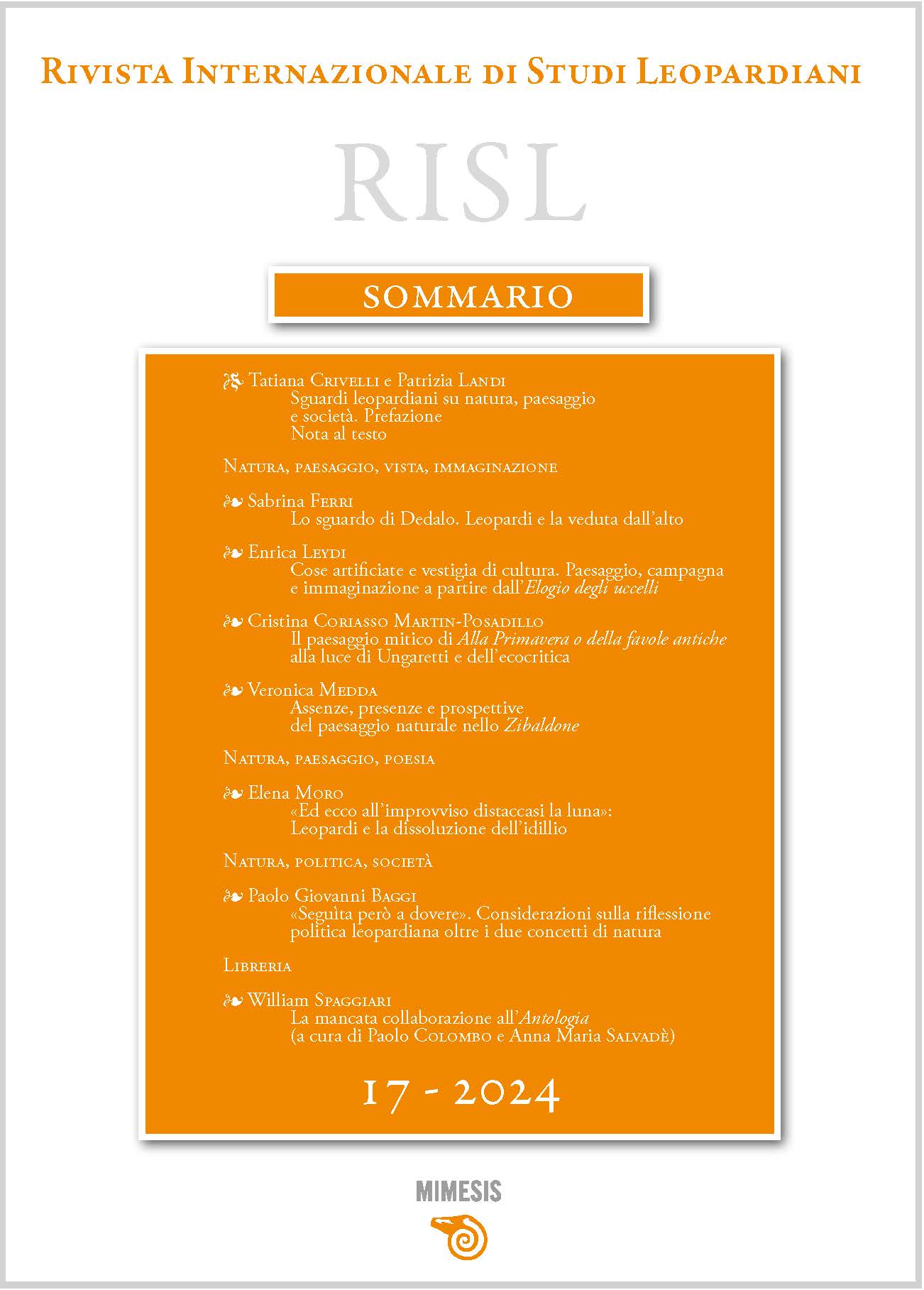Lo sguardo di Dedalo. Leopardi e la veduta dall’alto
Parole chiave:
veduta dall’alto, orizzonte, colpo d’occhio, visione panoramica, volo, paesaggio.Abstract
This article highlights and analyzes how the motif of the view from above in Leopardi exemplifies the epistemological and phenomenological changes that come along with the birth of the modern spectator and observer. It focuses on a few specific elements that characterize the way Leopardi describes and thinks about the act of viewing from above. These elements are connected to new theories of perception and visual experience that emerge between the 18th and 19th centuries. Particular attention is paid to: 1) how the concept of ‘horizon’ takes on a new significance and, from its original meaning as a mathematical and artistic notion, comes to define primarily a sensory experience; 2) how the “panoramic view” comes to be a predominant mode of experiencing landscape; 3) how the ‘coup d’oeil’ becomes a way to comprehend both the landscape specifically and the system of nature more generally.






